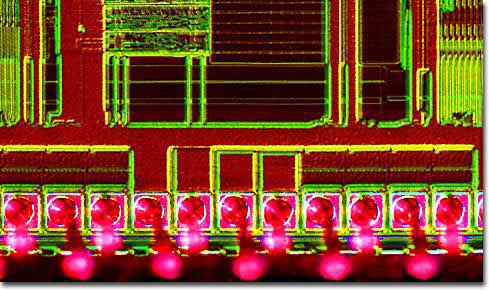|
As the quest for the computation crown continued into Intel's fourth generation of microprocessors, the 486 family grew with the use of internal clock doublers and triplers, creating the then-"speed demon" DX2s and DX4s. In March 1992, the 486DX2 was released with an external clock (bus) speed of just 25 MHz, but with a "lightning fast" internal clock speed of 50 MHz. Capable of executing 41 million instructions per second (MIPS) by using 1.2 million transistors, the Intel 486DX2 was fabricated with 0.8-micron silicon technology on an 81-square millimeter wafer. The DX2 chip featured 8 Kbytes of cache memory, support of 4 Gbytes of addressable memory, and an integral 80-bit floating-point unit (FPU). The 32-bit (internal register and external bus widths) central processing unit (CPU) was followed up in August 1992 with the faster 66 MHz (internal clock speed) 486DX2. This newer model operated on 5 volts and had a peak power dissipation of 7.0 watts, but more typically ran at a cooler 4.9 watts.
|
